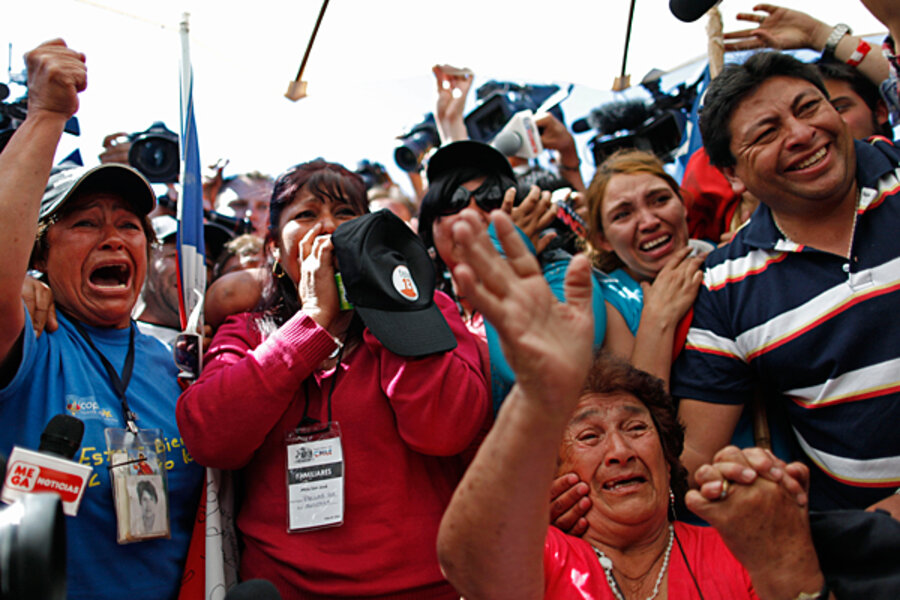When the mine owners took four hours to tell families about the accident, the families raised a stink. Families of the miners converged on the accident site immediately. And they didn't hold back on telling the press about the mine's reputation – in particular, that they had heard it had been collapsing for months, with dust falling from creaking ceiling fissures. The families put persistent pressure on government agencies and political leaders, driving the national government to take over the rescue and keep searching by any means possible. In the end, the search took 17 days. Once the workers were found, the families gave them constant support – first just through conversation, then later with clean clothing and other creature comforts. Oct. 13, those same family members were greeting their loved ones at the top of the exit shaft, and will have to help the miners cope with newfound fame.

Natacha Pisarenko/AP
Relatives of miner Dario Segovia react as they watch Segovia on a TV screen during his rescue operation at the camp outside the San Jose mine near Copiapo, Chile, Oct. 13.




